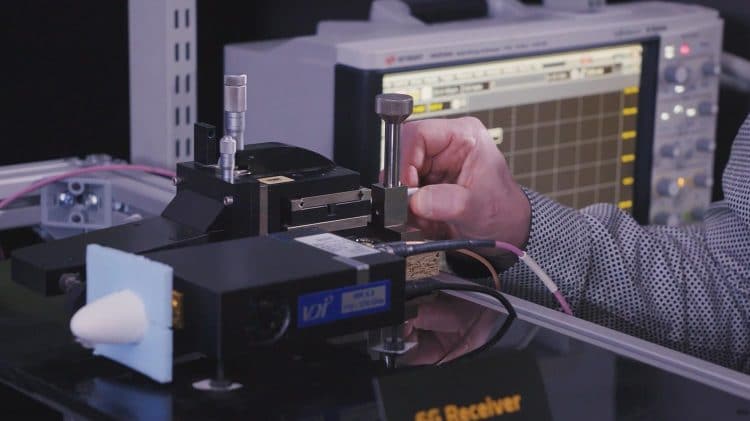
THz Sensing in Focus: Novel radio lenses
Can 6G sensing and imaging capabilities help us in locating water? Surprisingly yes. In the 6G demo on THz sensing, 6G Flagship’s expert team showcases the potential of 6G radio for capturing images of different objects in radio frequencies up to 300 GHz. Based on the electrical properties of an object, it is possible to identify, for instance, water in its structure.
One of the greatest assets of 6G radio is its extremely narrow radiation beam. “The angular width of the 6G radio beam can be less than 1 degree,” says Dr. Sami Myllymäki from Microelectronics Research Unit. “The narrow radiation beam enables space-selective communication and high signal quality. The radio links are also very directive. As a result, even the smallest of objects can easily have major impact on the received signal level.”
Phased array antennas and lens antenna techniques are the two alternative beam forming techniques that the team is exploring. “We can use either of the techniques for controlling the beam and as a result we can as much as ten-fold the accuracy,” Myllymäki notes. “For instance, we are demonstrating the use of a 1 mm beam at a 30 cm distance with tens of micrometres’ resolution.”
The demo setup contains a radio link running with a wideband communication signal at 100-300 GHz, depending on the used configuration. “While measuring the received signal, we use a three-dimensional linear stage to control the object’s position between the link ends accurately so that the signal propagates through the object.” Myllymäki explains. “To boost the signal level, we use lens antennas to focus the signal better to the object. In the current setup, the used link distance varies from 50 cm up to 2.5 meters. “
The team has explored various objects, including a living plant. “We have used leaf surface as a biological sample, a Bergenia leaf, to be exact,” Myllymäki specifies. “The demo viewer can see how the image of the leaf appears on the screen, while the system is simultaneously used for transmitting a communication signal. The program draws the picture on the screen based on the signal amplitude and phase. The drawn picture is based on the electrical properties of the leaf and we can, for example, clearly see the water veins in the leaf.”
Novel lenses provide unprecedented opportunities that the team is exploring wholeheartedly. “We have developed new composite materials and built new kinds of lenses that are environmentally friendly, low weight and with low electrical losses,” Myllymäki describes. “With our lenses, we can adjust the system’s highest performance efficiently either for a high-speed communication mode or for a high-accuracy imaging mode.”
At the same time, the demo viewer can follow the received signal spectrum on the screen. “An image taken in the radio frequencies tells different things than a regular camera image,” Myllymäki notes. “We can see the surface profile, the shape of the object, and even the content of the object if we change the leaf for instance to a water bottle.”
The usability and flexibility of the solution are boosted with the possibility to switch between modes. “We can provide very fast, data-intensive and high-resolution measurement information in a certain time when it is needed and otherwise use the system for communications,” Myllymäki notes. “In the case of autonomous vehicles, or in security and safety screening scenarios, for instance, the system could jump from the communication mode first to sensing and then imaging modes.”
In the future, the demonstration will enable imaging with longer link distances, higher signal bandwidths, and potential 6G waveforms. The target is to have high data rates and imaging capabilities in the same system. “In practice, we can enable imaging by using multiple beams or multiple antennas behind the radio lens,” Myllymäki adds.
In the demo, the focus is on radio imaging but 6G systems will enable many other sensing capabilities too. “Communication and sensing together can be exploited in various 6G-enabled vertical services in industrial, smart city, traffic, security, safety, agriculture and health sectors, to mention a few,” Myllymäki says. “Where communications infrastructure is needed, we can provide sensing, and vice versa. As a result, we can create both economic and sustainability benefits for the society.”
This article has been published in the 6G Waves magazine. Get a taste of our digitalized future and download the latest issue of 6G Waves!